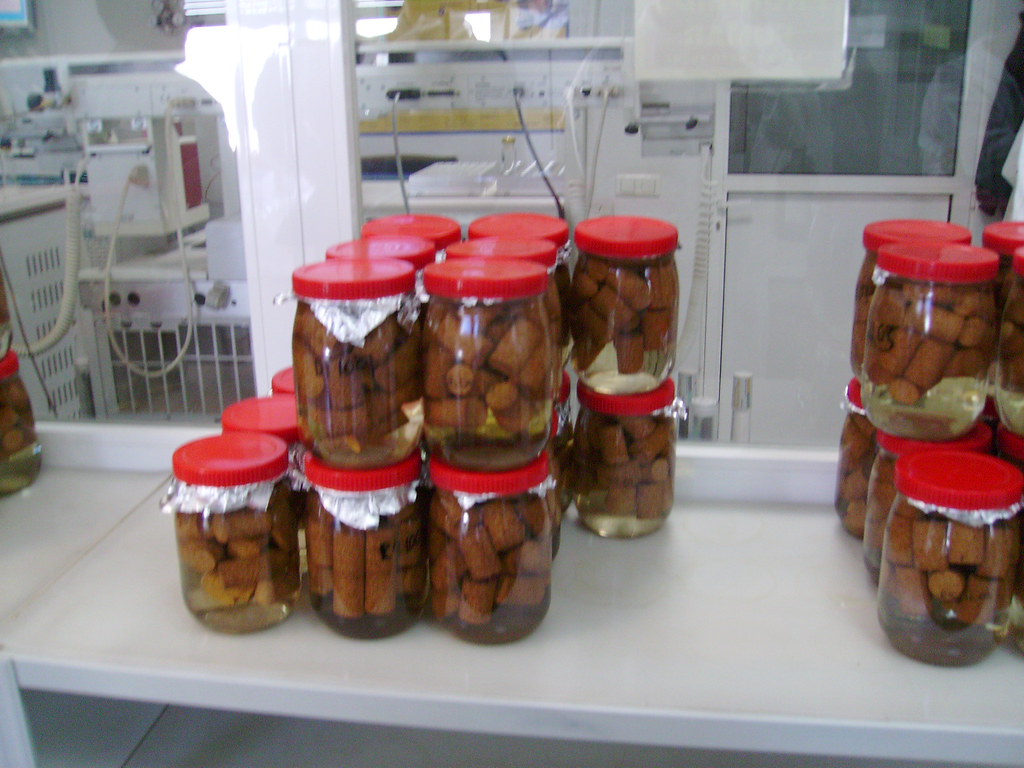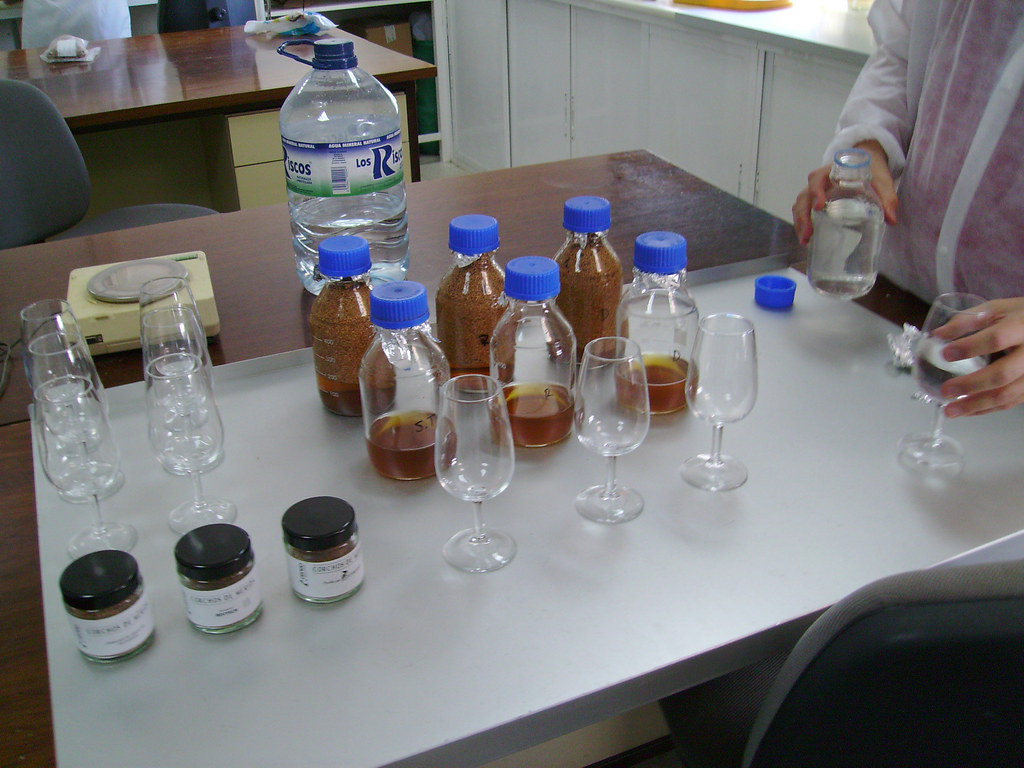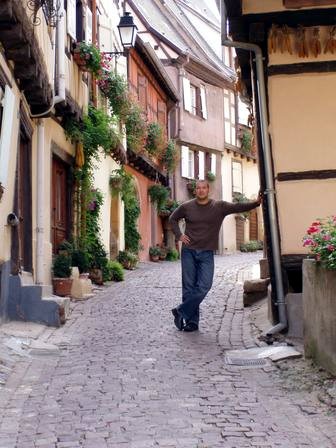Throughout the process of production, Oeno's laboratory is monitoring every step. All lots of cork flour are tested extensively after treatment, and any questionable result will cause that batch to be rejected and retreated until no trace of TCA can be found. "It is not a question of if the level is acceptable or not - the goal is to make it undetectable with the most modern methods available." They have 6 gas chromatographs - each of these babies is about as much as a Ferrari, last time I asked someone.
They also run tests on the completed closures, to ensure that no further contamination has occurred after the molding and shaping. I believe that Dominic said that they are in full compliance with ISO guidelines for manufacturing, and so this testing is just a part of their commitment to deliver the most consistent, highest performance closure to the industry.
We also smelled liquid from corks being soaked in the sensory lab. First, we smelled clean water, with no aroma at all. Next, traditional corks, with an earthy, woody aroma, some mushroom like character. After that, a steam treated cork, which was pleasantly woody, like cologne, without the mustiness or earthly aromas, much more clean and wood-like. Finally the DIAM, which smelled exactly like the water alone!
When we asked Dominic whether the DIAMANTE process could be applied to traditional corks, he said "you couldn't treat corks, because it would stretch them out of shape, but you could load planks into the machine, and punch them after treatment - it just would take an enormous amount of time and energy, since there would be much less surface area. But even so, this does not solve some of the other problems of corks - namely each one of them performs differently in terms of oxygen transmission and flavor masking or contribution - we want to make a better, more consistent product." I have found this to be true in my own trials - DIAM perform very consistently, natural corks are the least consistent closure available - one bottle could be perfectly preserved, while the next is aged and oxidized far beyond what it should be.
"You know" Dominic said, "in Bordeaux they say that there is no such thing as a perfect vintage, only perfect bottles. We want to make it so that every bottle can be perfect."
Subscribe to:
Post Comments (Atom)




No comments:
Post a Comment